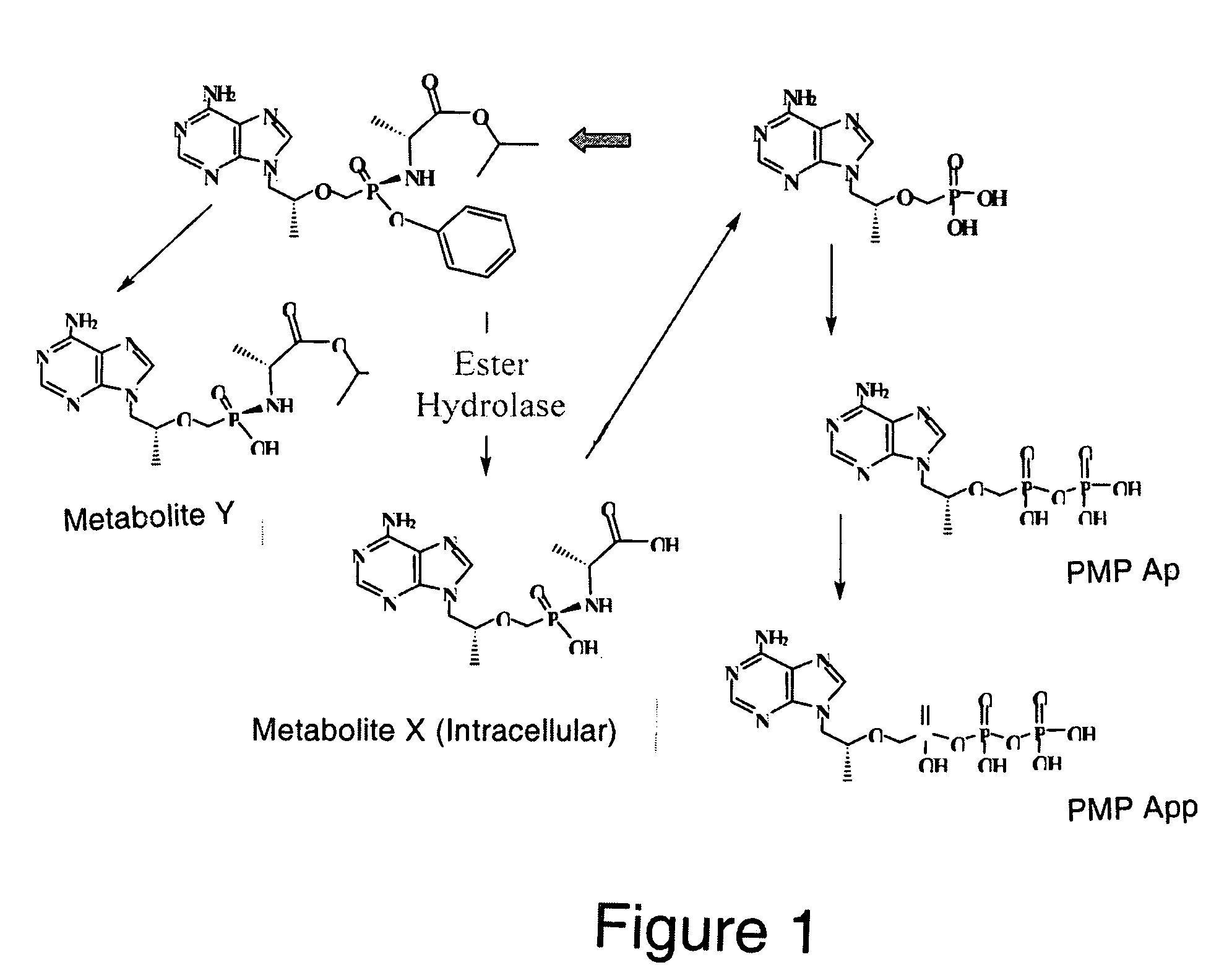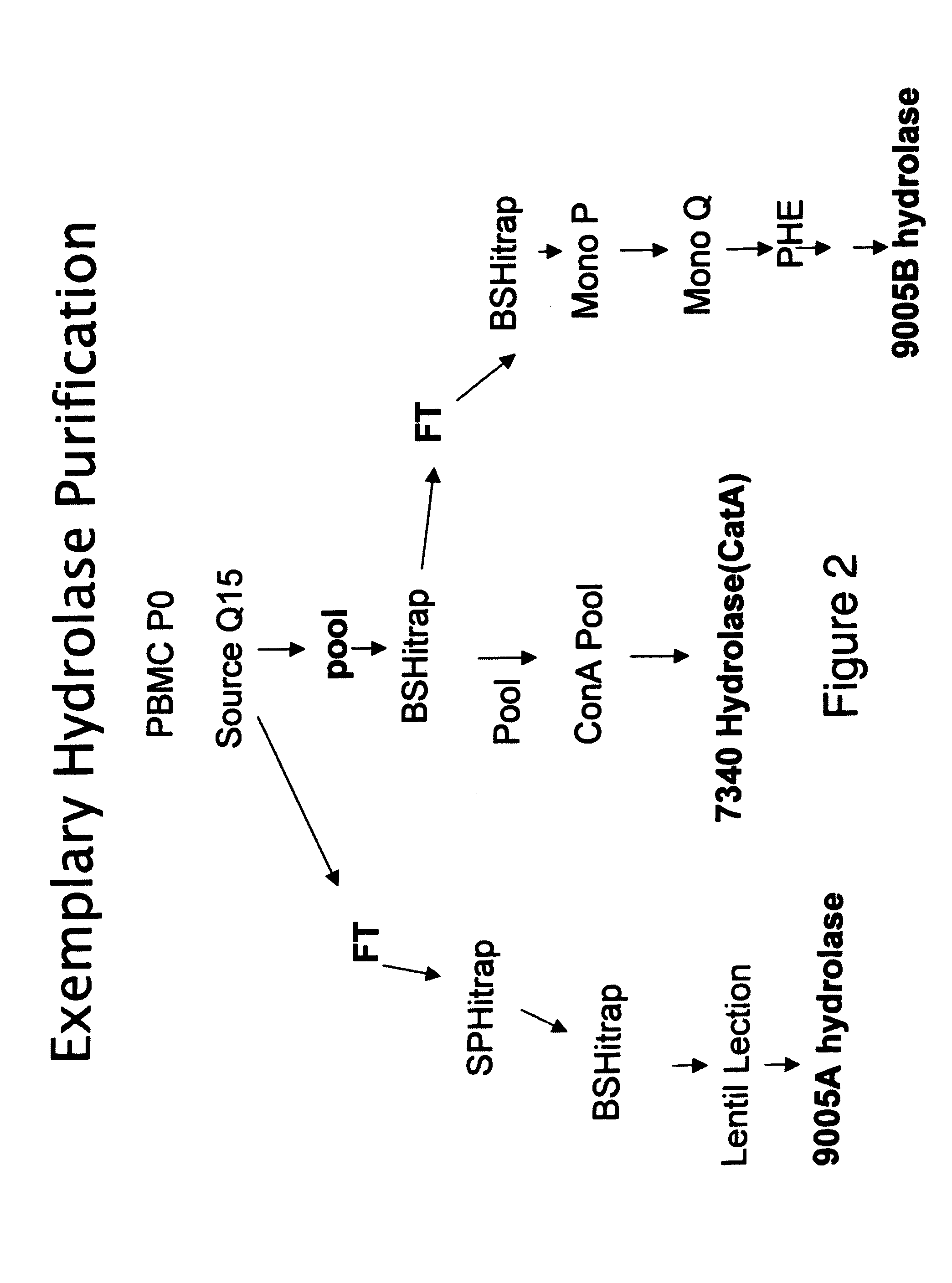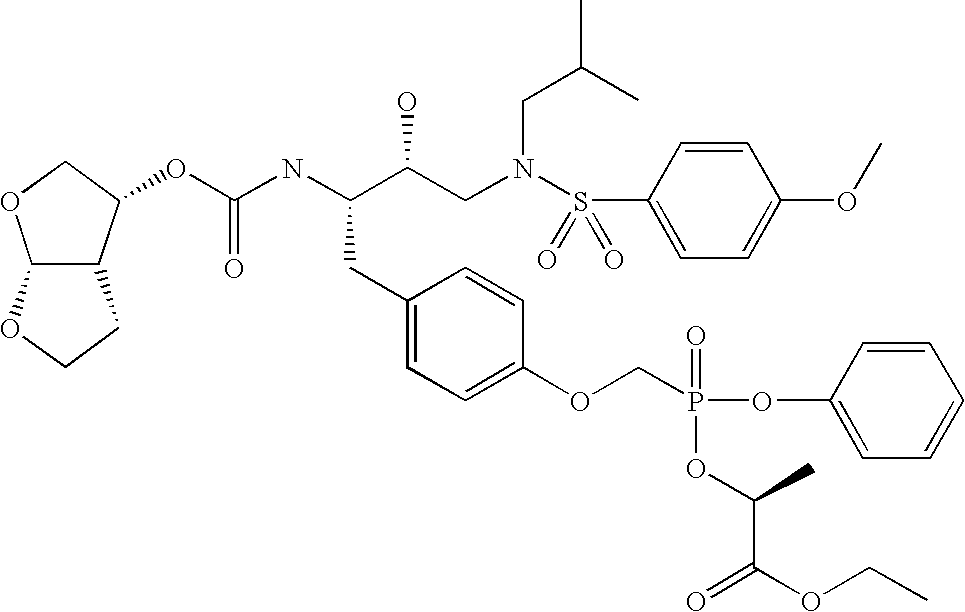Methods and compositions for identifying therapeutic compounds with GS-7340 ester hydrolase
a technology of ester hydrolase and therapeutic compounds, which is applied in the field of methods and compositions for identifying therapeutic compounds with gs7340 ester hydrolase, can solve the problems of difficult or inefficient intracellular target, difficult or inconvenient development of effective methods, and inability to achieve the effect of minimizing intercellular redistribution of drugs, e.g., to neighboring cells, and achieving the effect of minimizing drug redistribution
- Summary
- Abstract
- Description
- Claims
- Application Information
AI Technical Summary
Benefits of technology
Problems solved by technology
Method used
Image
Examples
example 1
Metabolism of Nucleotide Phosphoramidates
[0151]There is broad consensus that the bioactivation of nucleotide amidate triesters follows a general scheme (Valette et al., J. Med. Chem., 39: 1981-1991 (1996); McGuigan et al., Antivir. Chem. Chemotheraphy, 9: 109-115 (1998), McGuigan et al., Antivir. Chem. Chemotheraphy, 9:473-479 (1998); Saboulard et al., Mol. Pharmacol., 56: 693-704 (1999); Siddiqui et al., J. Med. Chem., 42:4122-4128 (1999)). Step A is the hydrolysis of the amino acid-like carboxylic ester. A nucleophilic attack by the carboxylic acid of the phosphorous (Step B) is believed to initiate the formation of the 5-membered cyclic intermediate which in turn is quickly hydrolyzed to the monoamidate diester (referred to as the amino acid nucleoside monophosphate, AAM, or metabolite X′, Step C). This compound is considered an intracellular depot form of the antiviral nucleoside. Various enzymes as well as non-enzymatic catalysis have been implicated in Step D, which is the hyd...
example 2
[0153]A. Rate of Production of [14C] Metabolite X:
[0154]The enzymatic production of Metabolite X from Compound K is monitored using the following ester hydrolase assay. Varying amounts of peripheral blood mononuclear cell (PBMC) extracts, column fractions or pools are incubated with [14C] Compound K at 37° C. for 10-90 min. The production of [14C] Metabolite X is monitored by measuring the amount of radioactivity retained on an anion exchange resin (DE-81). High performance liquid chromatography (HPLC) and mass spectrometry (MS) analysis of the reaction mixture and radioactivity retained on the filter confirm that only [14C]-Metabolite X binds the DE-81 filter. Under the assay conditions, the more hydrophobic [14C] Compound K is not retained on the DE-81 membrane. The final reaction conditions are 25 mM 2-[N-morpholino]ethanesulfonic acid (MES), pH 6.5, 100 mM NaCl, 1 mM DTT, 30 μM [14C] GS-7340 substrate, 0.1% NP40 and varying amounts of GS-7340 ester hydrolase...
example 3
[0157]Non-specific ester hydrolase activity is monitored by monitoring the enzymatic cleavage of alpha napthyl acetate (ANA) (Mastropaolo and Yourno, Anal. Biochem. 115:188-193 (1981)). This substrate has been used for both the measurement of esterase enzyme activity and in situ staining of esterases in tissue samples (Yourno and Mastropaolo, Blood 58:939-946 (1981); Yourno et al., Blood 60:24-29 (1982); Yourno et al., J. Histochem. Cytochem. 34:727-733 (1986)). The method described is a modification of the assay described by Mattes and Mattes, Toxicol. Appl. Pharmacol. 114: 71-76 (1992). Varying amounts of peripheral blood mononuclear cell (PBMC) extracts, column fractions, or pools are incubated with ANA at 37° C. for 20 min. The final reaction conditions are: 10 mM sodium phosphate, pH 6.5, 97 μM ANA and varying amounts of GS-7340 ester hydrolase enzyme in a final volume of 150 μl. The reaction mixture is incubated at 37° C. for 20 minutes, and the reac...
PUM
| Property | Measurement | Unit |
|---|---|---|
| molecular weight | aaaaa | aaaaa |
| molecular weight | aaaaa | aaaaa |
| molecular weight | aaaaa | aaaaa |
Abstract
Description
Claims
Application Information
 Login to View More
Login to View More - R&D
- Intellectual Property
- Life Sciences
- Materials
- Tech Scout
- Unparalleled Data Quality
- Higher Quality Content
- 60% Fewer Hallucinations
Browse by: Latest US Patents, China's latest patents, Technical Efficacy Thesaurus, Application Domain, Technology Topic, Popular Technical Reports.
© 2025 PatSnap. All rights reserved.Legal|Privacy policy|Modern Slavery Act Transparency Statement|Sitemap|About US| Contact US: help@patsnap.com



